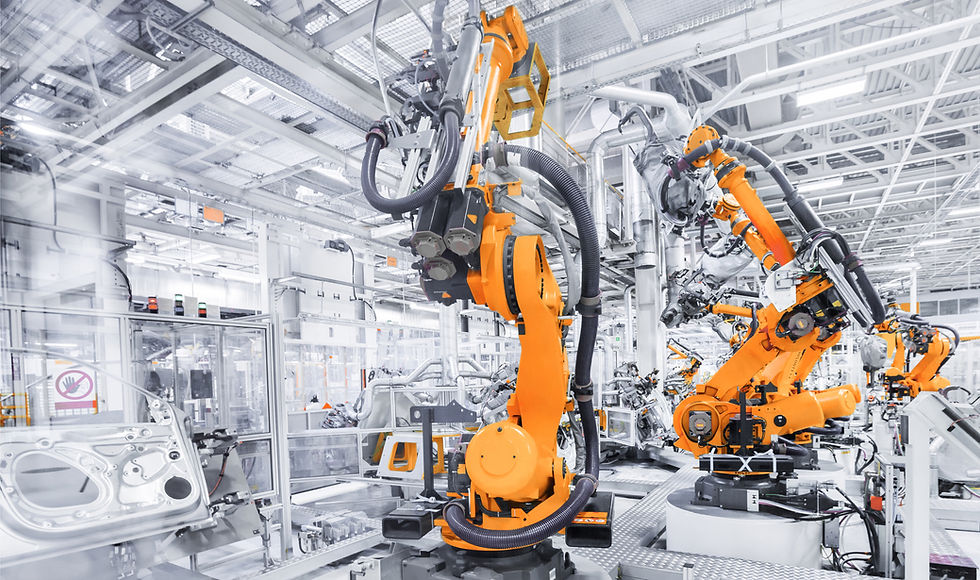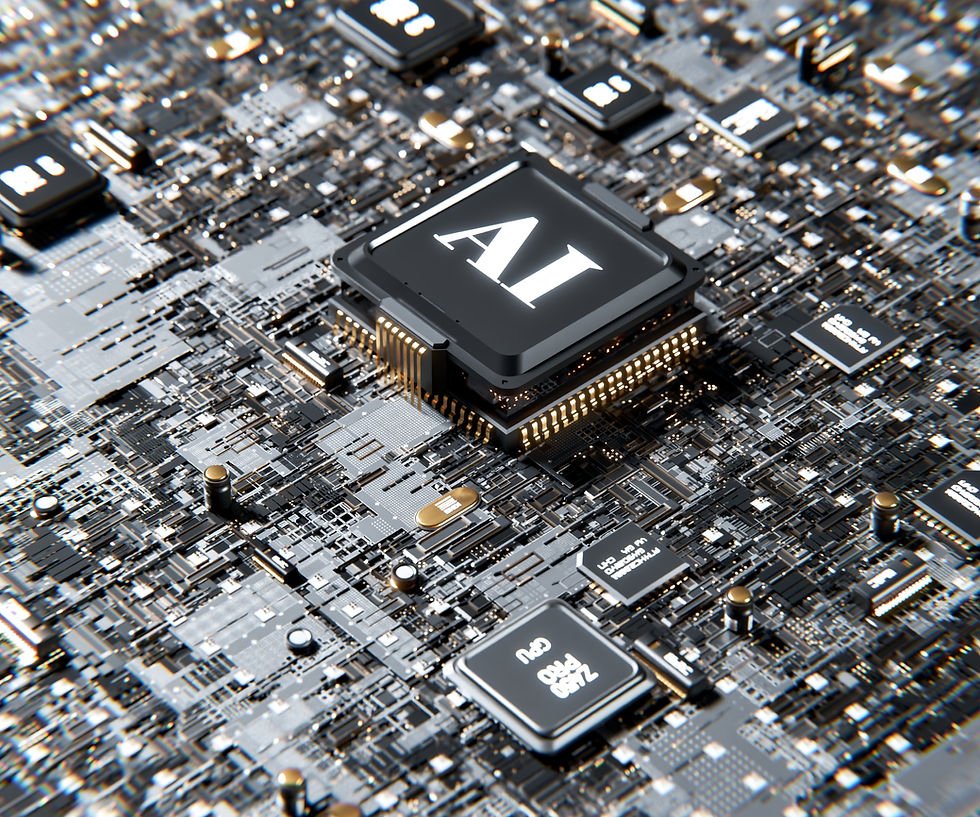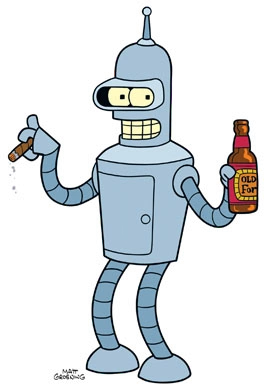Marvin the Paranoid: AI is Creeping on Me
- My Mate Marv

- May 1, 2024
- 4 min read
As a child, I imagined Artificial Intelligence (AI) through the lens of robotics—a physical, often humanoid representation that walks, talks, and interacts with the physical world. This image has been etched into public consciousness by decades of science fiction.
However, the reality of AI's evolution has taken a different path, branching into domains far beyond the robotic forms initially imagined. This post explores how AI has expanded from these early concepts to become a versatile and integral part of our digital landscape.
The Origins of AI and Robotics
The initial concept of AI was largely influenced by the imaginative realms of science fiction and early cinematic portrayals, which presented robots as the embodiment of intelligent machines. During the mid-20th century, pioneers like Alan Turing began exploring the potential of machines to mimic human thought processes, laying the groundwork for what would become modern AI. Robotics first emerged as a natural application of AI, aiming to create machines capable of performing tasks traditionally done by humans. A classic example of robotics applied as an extension of artificial intelligence in performing human tasks is the manufacturing robots used in car assembly lines. These robots, often called robotic arms, are used extensively in the automotive industry to perform various tasks such as welding, painting, and assembling parts. For instance, in car manufacturing, these robotic arms can precisely and efficiently handle tasks like welding car frames, installing windshields, and painting car bodies, which are tasks that require high consistency and can be repetitive and physically demanding for humans. The integration of AI allows these robots to operate autonomously, make decisions based on sensor data, and adapt to slight variations in assembly processes, enhancing both productivity and safety in factories.

The Expansion of AI into Software and Algorithms
As technology advanced, the scope of AI rapidly expanded beyond mechanical robots to software solutions and complex algorithms. Today, AI is predominantly software-based, influencing a variety of fields without ever taking a physical form. This transformation is not just a technological leap but also a cultural shift, where AI's presence has become a silent yet ubiquitous force in our everyday lives.
AI in our pockets: An extension of ourselves

The true extent of AI's integration into software is often underappreciated because it operates behind the scenes. Consider the smartphones that have become central to modern life - a modern manifestation of R2-D2, sat in our palms and never much further away than our pockets. Every interaction, from the facial recognition used to unlock the device to the predictive text that anticipates your next word as you type, is powered by AI. These features, once considered futuristic, are now taken for granted, subtly woven into the fabric of our daily routines without a second thought.
Moreover, AI has redefined our interactions with the world through personal assistants like Siri, Google Assistant, and Alexa. These tools process natural language, learn user preferences, and provide personalized responses, all through advanced AI algorithms that operate discreetly in the background. The convenience they offer belies the complexity of the technology, making their operation feel completely natural.
AI in Consumer Services: A Quiet Revolution

The stealthy nature of AI becomes even more pronounced when we look at consumer services. Streaming platforms like Netflix and Spotify use AI to analyse your viewing or listening habits, providing personalized recommendations that often feel intuitively aligned with your preferences. This not only enhances user experience but also increases engagement, all while the users remain largely unaware of the intricate AI processes at work.
Similarly, e-commerce giants like Amazon deploy AI to optimize every aspect of the shopping experience, from inventory management to personalized shopping suggestions. These algorithms analyse past purchases, search histories, and even how long you linger on certain items, quietly shaping the shopping landscape to increase both satisfaction and sales.
The Pervasive Role of AI in Data Analysis and Decision Making

Beyond consumer-facing applications, AI's invisible influence extends into data-heavy industries such as finance, logistics, and healthcare. In finance, algorithms now perform complex stock market transactions in milliseconds—a task that is humanly impossible, not only in terms of speed but also in the volume of data processed. These high-frequency trading algorithms are a stark example of AI’s capacity to operate beneath the surface, significantly impacting economic activities without any physical manifestation.
In logistics, AI systems optimize routing and inventory levels, predict maintenance, and manage supply chains with minimal human intervention. These systems are crucial in a world striving for efficiency and sustainability, yet their operations are largely unnoticed by the consumers who benefit from them.
Healthcare perhaps exemplifies the deepest and most impactful integration of AI. From algorithms that help radiologists detect tumours more accurately to predictive analytics that forecast outbreaks, AI is saving lives in ways that are profound yet largely invisible. These applications do not replace human expertise but enhance it, providing tools that help medical professionals make better decisions faster.
The Future of AI: Integrated and Ubiquitous

Looking forward, AI is set to become even more integrated into our daily lives and the infrastructure of society. This integration promises enhancements in efficiency and personalization but also poses significant ethical and societal challenges. Issues such as privacy, security, and the displacement of jobs will need to be addressed as AI becomes a ubiquitous part of our existence. The future of AI may see it become as fundamental as electricity—invisible yet indispensable.
The silent proliferation of AI across various sectors demonstrates a kind of stealth-like integration. AI's presence is everywhere and nowhere at the same time, embedded in the tools, services, and devices we use daily without the overt visibility of a robot. As AI continues to develop, its invisibility does not diminish its impact. On the contrary, it becomes a more deeply integrated, powerful force in our lives, influencing decisions and processes in countless unseen ways.
This exploration offers a glimpse into AI's journey and its vast potential beyond the confines of robotics, highlighting the need for an open-minded approach to future technological developments. The stealth-like nature of AI's integration into software and digital applications highlights a crucial aspect of modern technology: the most profound changes often come not with a bang, but as a whisper, seamlessly becoming part of the background of everyday life. As we move forward, recognizing and understanding this quiet evolution will be key to harnessing its potential while addressing the challenges it poses.













Commentaires